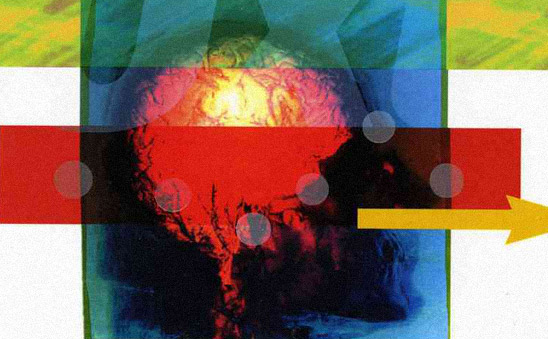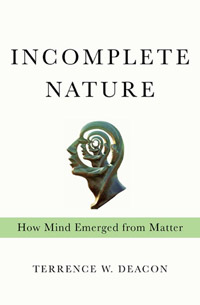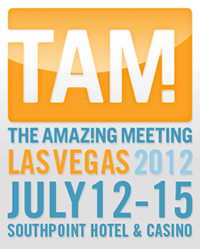In this week’s eSkeptic:
Our Next Lecture at Caltech:
Dr. Art Benjamin
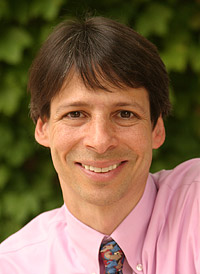
The Secrets of Mental Math: The Mathemagician’s Guide to Lightning Calculation and Amazing Math Tricks
SUNDAY, JUNE 10, 2012 AT 2 PM
Baxter Lecture Hall
Teachers and parents, bring your students and kids to see the famous lightning calculator and mathemagician Art Benjamin demonstrate simple math secrets and tricks that will forever change how you look at the world of numbers. Get ready to amaze your friends—and yourself—with incredible calculations you never thought you could master, and learn how to do math in your head faster than you ever thought possible, dramatically improve your memory for numbers, and—maybe for the first time—make mathematics fun. Dr. Benjamin will teach you how to quickly multiply and divide triple digits, compute with fractions, and determine squares, cubes, and roots without blinking an eye. No matter what your age or current math ability, Dr. Benjamin will teach you how to perform fantastic feats of the mind effortlessly. This is the math they never taught you in school.
Admission policy for Baxter Lecture Hall
Due to security concerns, Baxter Hall will be locked and the audience will be admitted only through the doors on the South side of the building by the lily ponds. If, for medical reasons, you cannot climb the stairs to the hall on the 2nd floor, someone at the main entrance (located in the middle of the West side of the building) will escort you to the elevator.
Tickets
First come, first served at the door. Seating is limited. $8 for Skeptics Society members and the JPL/Caltech community, $10 for nonmembers. Your admission fee is a donation that pays for our lecture expenses.
About this week’s eSkeptic
In this week’s eSkeptic, Sam Mackintosh reviews Terrence Deacon’s book, Incomplete Nature: How Mind Emerged From Matter (New York: W.W. Norton & Company, 2011, ISBN-13: 978-0393049916).
Sam Mackintosh is a veteran teacher with degrees from Wesleyan University and New York Theological Seminary. He has a life-long interest in exploring the unfinished business of science in connection with quaternary-sapiential consciousness and ritual’s Paleolithic roots. This blog-post contains a more extensive introduction to Deacon’s book.
Mind Matters
by Sam Mackintosh
Terrence Deacon is author of the well-received 1998 book The Symbolic Species: The Co-Evolution of Language and the Brain and is Professor of Biological Anthropology and Neuroscience at the University of California, Berkeley. In Incomplete Nature: How Mind Emerged From Matter, Deacon attends to what he calls “the unfinished business of science”: understanding life and mind from a strictly scientific perspective. As such he identifies what he considers to be two impediments to this task: scientific reductionism and philosophical dualism.
Scientific reductionism aims to explain biological and human life entirely by the underlying physical and chemical processes of inanimate matter. The subjective, lived experience of meaning and value are not only ignored but regarded as mere ephemera—indeed, unworthy of scientific investigation. Although few live as if this were an accurate assessment of human experience, reductionism is nonetheless a widespread view. Indeed, it is commonly misunderstood to be the scientific understanding of reality. Dualism is the opposite of reductionism. It is a philosophical (and often religious) perspective that insists not only that life and consciousness are something more than mere matter but that the “more” has been inserted into matter by a source external to the material world. Deacon disagrees with both perspectives. He laments, “Our best science excludes us.” The point of his extended argument is that it need not.
Absential Influences
The human mind and heart are fascinated by the order perceived in the world: recurring patterns in the night sky, the cycles of the seasons, the six-pointed shapes of snowflakes. Deacon notes that such patterns necessarily were explained in pre-scientific times by what he calls “absential influences”—magic, supernatural powers, divine intervention. In science, says Deacon, these “absential accounts” came into question beginning around the year 1850. No longer is “divine design” acceptable as a scientific explanation for anything. Instead, the modern mechanistic view ascended, reaching a zenith in the mid-20th century with the birth of ideas about “self-organizing processes.”
Deacon avers that while self-organization is a misleading term (since there is no “self” involved in the formation of these natural patterns), it is in such common use now that he, too, employs the term. As well, while “self-organizing” concepts do help us better understand patterns in nature, they do not account for key thresholds in the origins of complexity. Notably, the “unfinished business of science” is to comprehend the processes by which the physical world gives rise to the living and, in a later step, to consciousness. Deacon stresses that in everyday life we act as if we have goals for what we do. We presume that some outcomes are better than others, and thus we engage in specific tasks. In ordinary life, therefore, purpose, value, and function are central concerns. Yet science ignores them.
Deacon wants to bring them into the scientific fold through what he calls “ententional phenomena,” which encompass these and other aspects of living systems for which ends or goals (telos, in Greek) are distinguishing features. Scientifically, one takes a wrong path by assuming that ententional phenomena are embodied in physical things or static material objects. Rather, life and mind emerge “from the dynamic processes which generate them.” To ignore the ententional phenomena, cautions Deacon, would consign humans to the status of mere automatons, like the golems of Medieval stories or the zombies of contemporary science fiction films. Yes, there is human-like behavior in the purported actions of golems and zombies. But, as Deacon puts it, “nobody’s home.” As he observes: “There would be no caring, no cared for, no kindness, no sharing of beauty and discovery and sorrow, no value to our pains and pleasures.” Indeed, for each of us, there would be no “me” at all. Reductionist materialism, says Deacon, “is impotent to explain the mystery of ourselves.”
If, on the other hand, we accept the dualistic view that life and mind are real because of an intervention from outside the material realm, this would just make us aliens to this world. Many people do experience this kind of alienation today, and Deacon holds that this is the root cause of our ecological problems. “We don’t owe the Earth much if we don’t belong here,” he notes, and thus a sense of “belonging in the universe” is humanity’s single greatest need.
Denial of the reality of “ententional phenomena” has divided the natural sciences from the human sciences, says Deacon, and has divided all of science from the humanities. It has alienated scientific knowledge from human experience, and that denial makes science appear to be the enemy of human values—hence, the rebirth of religious fundamentalism with its deep distrust of non-religious explanations for the genesis of human values.
Deacon contends that to move beyond the impasse of rationalist reductionism and religious dualism, we need in science something akin to what zero is in math. Historically, any attempt to reify the concept of nothing was long shunned and feared. Once accepted, zero revolutionized calculations and made modern science possible. In our day, ententional phenomena are likewise waiting in the wings for their turn on stage. Deacon attempts to demonstrate the wonders of discovery and explanation that their admission will bring forth.
The Energy of Life
To bring ententional phenomena fully into the purview of science Deacon begins by categorizing three distinct levels of energy processes, which he labels homeo-dynamics, morpho-dynamics and teleo-dynamics. In homeo-dynamics, the bits and pieces of matter move spontaneously from a higher energy state to a lower energy state. The shift goes from more to less orderly. We all know this process from personal experience: life is messy and things all too easily fall into disrepair. In physics, this process is described by the Second Law of Thermodynamics, but it’s not really a law so much as a way of accounting for the relentless and inevitable increase toward disorder in the world.
Both morpho and teleo processes, however, work against this general thermodynamic flow. Both depend on an influx of energy from outside themselves and both result, thereby, in a spontaneous increase in order, regularity, and (sometimes) complexity. Morpho-dynamic processes yield regularly shaped but still-inanimate objects, such as snowflake crystals and convection columns in a pot of boiling water. Teleo-dynamic processes emerge from and sustain life and mind. At minimum, living things have a purpose (an end or goal): their own persistence. Overall, it is probing into how these teleo processes actually work that can help us understand the origins of life and mind.
Deacon lists four major ways in which life-forms differ from the inanimate shapes born of morpho-dynamics. While morph-forms result from the surrounding environment, life-forms interact with it. Living things are also able to initiate changes within themselves in response to external changes in their environment, to “assess or evaluate various gradients in their surroundings” and to “move so as to anticipate and avoid depleted conditions and seek more optimal ones.” Even at the level of one-celled organisms, living things have an inner agency, an authentic acting “self.” They are not reducible to their components: they show different properties—and thus have a certain freedom—from what they are constructed. And even the most elementary kinds of living things reproduce themselves, resulting in lineages which (just as do individual organisms) adapt within and without to environmental changes. Lineages unable to adapt go extinct, while those that do adapt sometimes evolve greater thresholds of complexity.
That life forms adapt and evolve is by no means an explanation for the origins of life and mind. The question of origins is thus “the great question for 21st-century science.” How indeed did life and mind emerge during Earth’s long evolutionary development? “We need to construct an understanding of emergence based on the dynamic cosmic processes,” says Deacon. The idea of emergence is quite new; it does not date back to the time of Galileo or Newton, or even Darwin. Rather, emergence “began to take on meaning only in the last years of the 20th century,” and that, in turn, owes to the advent of high-speed computers.
Modern computers can run hundreds of thousands of iterations in a relatively short time, and this allows the pathways of physical, chemical, biological, and even social changes to be modeled and studied. Deacon points out that the concept of emergence is now used not just in computation and the physical sciences but also in economics, social studies, and business applications. To a great extent, then, the fundamental philosophical transition of our time—the shift from stasis to dynamis in our cosmology—owes to computer technology. Given the challenges confronting cultures globally, this dynamic, emergent worldview is an essential frame for getting on with “the unfinished business of science.”
Key to this new perspective is that emergence “does not mean new physics and chemistry laws but new cause-and-effect laws.” And for that we need to examine more than the dynamic processes involving matter and energy. Deacon urges us to turn our attention to relationships. One aspect of relationship on which processes of emergence depend is constraint. When energy infuses a dynamic molecular system, something new will emerge only if the lower level homeo-dynamic and morpho-dynamic processes are constrained, are channeled. For example, the energy released in an internal combustion engine performs useful work only because the cylinder constrains the piston to move in but one direction.
Now here is the twist: Morpho and teleo processes are no less a norm in the natural world than are homeo processes. They will occur wherever they can; they emerge whenever the higher levels of energy are available and transition to the lower levels is restricted/constrained. Deacon offers an analogy from the ancient craft of silk weaving. When threads of silk are woven together, all other random ways in which those threads might have been aggregated are prevented (excluded, constrained). While it is obvious that the resulting fabric isn’t made of anything other than thread, it is also obvious that the fabric is much more than mere thread. We can do very little with heaps of thread compared to what we can do with woven fabric.
Just as the resulting fabric is “thread in relationship,” so too are living things and human consciousness “matter and energy in relationship.” By examining the growth of complexity and the genesis of telos in this way, Deacon notes, “The emergence of these attributes can be understood without attributing them to an external source or denying that a real threshold has been crossed.” Thus, the unique characteristics of the fabric of life and mind are woven from the same matter and energy that constitute the rest of the world. There is complete continuity between the realm of physics and chemistry and the realm of life. Deacon proclaims, “After 500 years of modern science we can stop saying to ourselves, ‘Maybe I don’t belong here.’”
Meaning, purpose, value and the other “ententionals” expressive of human life are no less real and natural than are atoms and molecules. Ententional phenomena are fully accessible to scientific inquiry. In Deacon’s view, they are poised to become the ‘zero’ that will transform modern science and implant our selves and subjectivity gracefully within the continuum of natural and understandable processes.
Skeptical perspectives on brains, minds, and consciousness…
-
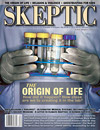 The Origin of Life
The Origin of Life
Skeptic magazine volume 16, number 2 -
Topics in this issue include: How Did Life Begin: A Perspective on the Nature and Origin of Life; An Incomprehensible Universe: Why the Human Brain is Ill-Equipped to Grasp the True Nature of Nature; Broadcasting from the Great Beyond: A review of Consciousness Beyond Life: The Science of the Near-Death Experience; How Close Are We to Creating Life in the Lab?; Who Still Believes in 9/11 Conspiracies?; What is Naturopathy?; Was Hypatia of Alexandria a Scientist?; Stradivarius Pseudoscience; Lying About Placebos… Order the back issue.
-
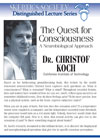 The Quest for Consciousness
The Quest for Consciousness
by Dr. Christof Koch
-
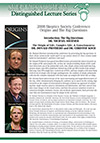 Origins & The Big Questions:
Origins & The Big Questions:
Conference 2008. Part 1
with Dr. Christof Koch -
Dr. Christof Koch delivers one of the most entertaining and laugh-filled lectures of the day, while simultaneously bringing the audience up to speed on the cutting edge research on the origins of consciousness through a bottom-up approach of analyzing how single neurons process stimulation and information, and then convert that into visual images in the visual cortex, and how this process somehow results in conscious thought, emotions, reason, and aesthetic appreciation. Koch presents the case that our consciousness may be unique in the universe. Order the conference DVD.
-
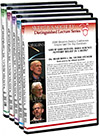 Origins & The Big Questions
Origins & The Big Questions
Conference 2008 (5 Part Set)
with Donald Prothero, Leonard Susskind, Paul Davies, Sean Carroll, Christof Koch, Kenneth miller, Nancey Murphy, & Michael Shermer -
Today, there is arguably no hotter topic in culture than science and religion, and so much of the debate turns on the “Big Questions” that involve “origins ”: the origin of the universe, the origin of the “fine-tuned” laws of nature, the origin of time and time’s arrow, the origin of life and complex life, and the origin of brains, minds, and consciousness. Now, science is making significant headway into providing natural explanations for these ultimate questions, which leaves us with the biggest question of all: “Does science make belief in God obsolete?” we have assembled some of the world’s greatest minds to discuss some of the world’s greatest questions. In 2008, the Skeptics Society held a conference wherein we assembled some of the world’s greatest minds to discuss some of the world’s greatest questions…
READ more about this conference and order the 5-part DVD set.
OR, order single DVDs: part 1 | part 2 | part 3 | part 4 | part 5
-
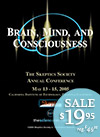 Brain, Mind, Consciousness:
Brain, Mind, Consciousness:
Conference 2005
with Dr. Christof Koch
Announcing The Amaz!ng Meeting 2012
Southpoint Hotel & Casino, Las Vegas, NV
July 12–15, 2012
THE AMAZ!NG MEETING (TAM) is an annual celebration of science, skepticism and critical thinking. People from all over the world come to TAM each year to share learning, laughs and the skeptical perspective with their fellow skeptics and a host of distinguished guest speakers and panelists.
The James Randi Educational Foundation (JREF) has hosted its annual Amaz!ng Meeting since 2003 as a way to promote science, skepticism and critical thinking about paranormal and supernatural claims to the broader public. TAM has been held in Las Vegas, NV since 2004 and has become the world’s largest gathering of like-minded science-advocates and skeptics.
With yet another incredible lineup of speakers, hands-on workshops, and entertainment, this is sure to be an Amaz!ng Meeting you won’t want to miss! Check out the entire program, and follow @jref on Twitter for the latest #TAM2012 news and announcements.


